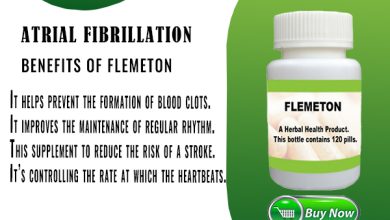New Research and Treatment for Atrial Fibrillation

There’s some good news for people with atrial fibrillation (AFib). Researchers across the globe are working to discover new therapies for this condition that may help you lead a better life. Here’s the latest research on AFib, as well as an overview of new drugs and other treatment approaches that may be on the horizon.
Latest Research
Women and Stroke Risk
The American Heart Association recently published a study in its journal Stroke revealing that women with AFib may be at higher risk of stroke than men. Not only that, but they also may have more severe strokes. The researchers examined data from an Austrian stroke registry in which a third of patients had AFib. The stroke strength was rated on a scale of 1 to 10. Women’s strokes averaged a 9 while men’s strokes averaged at a 6 on the scale.
What does this mean for women? The researchers concluded that stroke prevention for women with AFib is extremely important. Women should focus on lifestyle changes to help with conditions that may contribute to stroke. These include losing weight and taking blood-thinning medications to prevent clots.
Women and Complications
Women may also be at a greater risk of having complications from a common procedure used to treat Atrial Fibrillation. In a study published in JACC: Clinical Electrophysiology, researchers examined over 20,000 AFib patients who were having catheter ablations. A third of these patients were women who were also generally older with higher risk of stroke than the men. After the procedure, the women were 12 percent more likely to wind up in the hospital again within a year.
On the flip side, the study found that women respond well to ablation. They are 8 percent less likely to need another ablation to treat their Atrial Fibrillation. They are also 25 percent less likely to need cardioversion, another Treatment for Atrial Fibrillation performed to try to restore a regular heart rhythm. So, while women did seem to have a greater risk of complications in the year after ablation, they may fare well in the long term.
Yoga and Atrial Fibrillation
Striking a yoga pose may have the power to both lower your blood pressure and slow heart rate. In an article published by the European Journal of Cardiovascular Nursing, researchers assigned 80 AFib patients standard treatment or standard treatment plus yoga. At the end of the study, these people filled out questionnaires about their health. In addition to experiencing physical benefits, participants who did yoga had higher mental health scores and reported a higher quality of life.
If you’d like to incorporate yoga into your routine, ask around at local studios to see what forms they teach. The participants in this study did what is called MediYoga, which is specifically designed for people with heart conditions. If you can’t find a class in this method, a local teacher may be able to modify their class to suit your needs.
Blood Thinners
Nearly one in three people Atrial Fibrillation AFib are not taking the recommended blood thinners to reduce their stroke risk. Researchers recently published an article in the Journal of the American College of Cardiology about how the paradigm for Atrial Fibrillation treatment may be changing. While blood thinners should be recommended to all the people in this study, only between 60 and 62 percent of them were taking warfarin or other blood thinners. Another 38 to 40 percent of people were taking just aspirin.
Even more worrying, the gap of care seems to be the greatest in people who are at higher risk of having complications, like people with high blood pressure and heart disease. The researchers recommend that people with Atrial Fibrillation who can take blood thinners take more than just aspirin. If you’re currently not taking a blood thinner, consider speaking with your doctor about this treatment option to lower your risk of stroke.
Resource Link: https://www.healthline.com/health/living-with-atrial-fibrillation/advancements/latest-research-treatments#1
Related Information:
The Best Natural Ways to Treat Atrial Fibrillation Quick How-To Guide




